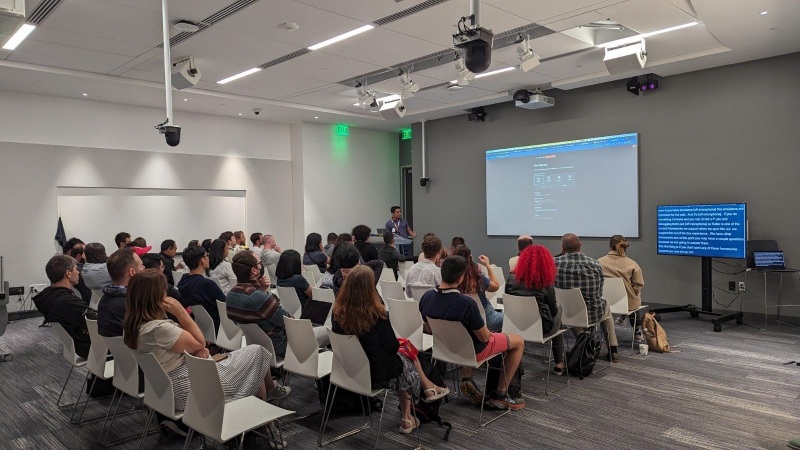
Google’s esteemed AI and cloud specialist Kaushik Sathupadi continues his groundbreaking work with the publication of a new research paper titled “RAP-Optimizer: Resource-Aware Predictive Model for Cost Optimization of Cloud AIaaS Applications.” By concentrating on cloud-based AI-as-a-Service (AIaaS) models, this study offers a novel approach to address the rising operating expenses of AI-driven applications. Sathupadi tackles one of the most important issues in contemporary cloud computing with this study: economical resource use in AIaaS settings.
An Overview of RAP-Optimizer
The RAP-Optimizer optimizes cloud-based resources by combining state-of-the-art technology and algorithms on a solid foundation. The research report claims that the RAP-Optimizer minimizes the number of active physical hosts needed in cloud environments and reduces resource underutilization by integrating Deep Neural Networks (DNN) and the simulated annealing optimization algorithm.
The ability of the RAP-Optimizer to anticipate and modify resource requirements in real-time, optimizing the distribution of computational resources as demand varies, distinguishes it from conventional optimization techniques. In the current cloud computing environment, where AI applications frequently encounter abrupt increases in traffic or usage, real-time adaptability is essential.
Three main goals are the emphasis of its design:
- Dynamic Resource Allocation: Managing erratic demand spikes is a major difficulty in AIaaS systems. Cloud-based systems may adapt to fluctuating traffic levels without under- or over-provisioning computing resources thanks to the RAP-Optimizer’s dynamic resource allocation features. Performance and cost may be balanced because of the model’s ability to forecast resource requirements and distribute them in real time.
- Cost Optimization: AIaaS applications that use the RAP-Optimizer experience a 45% decrease in server costs, per Sathupadi’s research. The model eliminates needless resource use by lowering the average number of active hosts needed each day by five. AIaaS platforms may save a lot of money on operating costs because of this enhanced resource management, which makes it possible for companies to make their AI solutions more affordable.
- Profit Margin Expansion: The RAP-Optimizer significantly increases profitability in addition to reducing expenses. According to the study, companies that used this methodology witnessed a 179% rise in their profit margins over a 12-month period, going from $600 to $1,675 each month. The RAP-Optimizer’s capacity to improve cloud resource efficiency while preserving high performance is directly responsible for this rise.
The Function of AI in Optimizing Cloud Costs
Kaushik’s RAP-Optimizer is more than just a theoretical model; it is a progressive solution to one of the most important problems in cloud computing: striking a balance between cost and performance. As companies expand their AIaaS applications to accommodate more users, AI’s contribution to cloud cost optimization becomes more and more significant. Platforms can more accurately predict and manage workloads and save a substantial amount of money by combining AI-driven prediction models with resource management algorithms.
A larger trend in AI-driven resource management is also reflected in the RAP-Optimizer’s dependence on deep learning techniques. The RAP-Optimizer outperforms conventional heuristic techniques in forecasting future resource requirements by training models on previous data. Because resource consumption is frequently unpredictable in cloud systems, this forecasting capability is very useful.
Kaushik Sathupadi: A Pioneer in Cloud and AI Development
The development of Kaushik Sathupadi as a cloud and AI thought leader started long before the RAP-Optimizer article was published. Kaushik has been at the vanguard of multi-cloud technological advancements as a trailblazing specialist at Google, using AI to optimize cloud-based processes. His earlier research has greatly influenced how cloud computing will develop in the future, especially in regard to the application of AI to boost productivity and save operating costs.
The tech community is widely aware of Kaushik’s standing as a pioneer in cloud computing and artificial intelligence. He is regarded as a pioneer in his industry because of his method of using cutting-edge AI solutions to tackle difficult cloud problems. His role as a pivotal player in forming the upcoming generation of cloud-based technology is further cemented by this most recent study, which expands on years of experience.
Future Prospects
The RAP-Optimizer is only the start of a new generation of AI-powered cloud management solutions that will completely transform how companies use the cloud. The demand for effective resource management will only rise as AIaaS expands, and technologies like the RAP-Optimizer will become essential for businesses looking to maintain their competitiveness.
The most recent research by Kaushik Sathupadi is a significant advancement in cloud-based infrastructure optimization, providing a model that is not only economical but also scalable and flexible enough to accommodate the changing requirements of AIaaS applications. The RAP-Optimizer will probably be crucial in determining how AI-driven cloud solutions develop in the future as cloud technology develops.
Conclusion
Cost-effective resource management is one of the biggest problems in AI-driven cloud computing, and Kaushik Sathupadi’s RAP-Optimizer offers a revolutionary solution. The RAP-Optimizer provides a scalable, flexible methodology that integrates AI and machine learning into cloud resource allocation, lowering expenses, boosting profitability, and enhancing performance. This study demonstrates Sathupadi’s continued contributions to the field as well as his outlook on cloud computing and artificial intelligence.